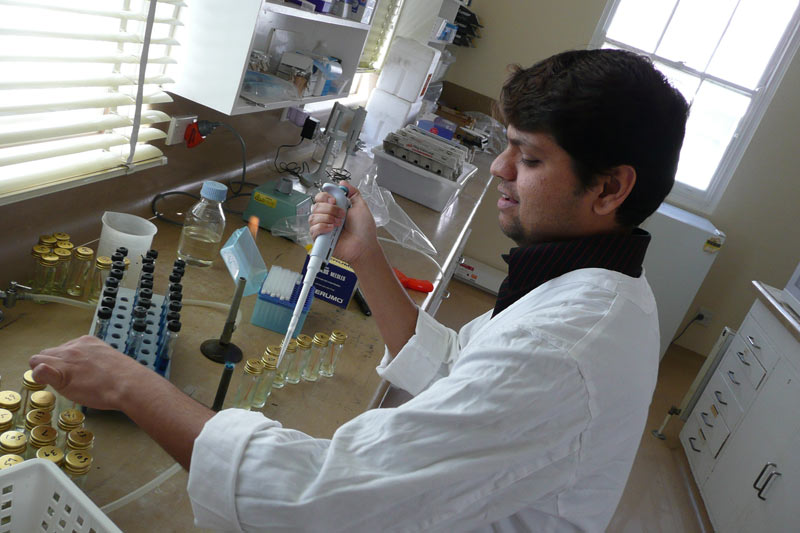Poultry CRC researcher, Dr Kapil Chousalkar at The University of Adelaide, has recently commenced a project investigating the dynamics of Salmonella shedding on commercial cage layer farms. Titled Epidemiology of Salmonella on layer farms, this research aims to determine the roles environmental, or bird or egg factors play in the transmission pathways of Salmonella species. “This will answer whether certain levels of Salmonella in the shed environment or ‘in bird’ will constitute the Salmonella load we see on the egg”, said Kapil.
Planning to sample across a whole year in this longitudinal study, Kapil has collected samples from a number of commercial egg farms. His sampling regime covers egg belts, eggs (including internal contents), dust, feather dander and faecal samples. Kapil will also be investigating the effects of stage of lay of the birds on Salmonella shedding. He notes, “One of the main reasons for Salmonella contamination on farms is multi-aged flocks.” After initial sampling, Kapil’s team, including Poultry CRC supported student Vaibhav Gole, will target Salmonella positive birds to monitor their in-cage environment.
Kapil explains the importance of Salmonella, “There are a number of different serovars of Salmonella, with S. Typhimurium being of major concern in Australia, as this serovar is commonly reported in cases of food-borne illness. S. enteritidis is common overseas but fortunately has never been endemic in the national flocks, and we have strict surveillance programs to ensure this remains so.” S. enteritidis is a notifiable exotic infection in Australia.
Thus far, with three rounds of sampling complete, Kapil’s team have found no S. Typhimurium on eggs as yet, even if laid from birds that are shedding S. Typhimurium, and have not had any internal egg contents return positive. “The primary concern with S. Typhimurium is that it is very hard to control. Even with good biosecurity Salmonella can get onto farms via feed, new batches of birds, people, pests, improper hygiene and some serovars could exist naturally in the environment” he said.
This research represents another successful CRC collaborative process. Kapil notes, “Dr Margaret Sexton from PIRSA (Poultry CRC project leader at participant organisation the South Australian Research and Development Institute [SARDI]) has been instrumental in putting us in touch with commercial egg producers.” In addition, samples collected are being quantified at SARDI by Dr Valeria Torok, another CRC project leader.
Kapil’s project aims at delivering best practice standards for the egg industry in order to minimise levels of Salmonella on-farm. Determining the best areas within a shed to sample from, to give an accurate assessment of Salmonella levels for regular monitoring programs, will be a major feature of this project’s outputs. Kapil commented that “events such as WPSA poultry field day are useful in disseminating these findings to egg producers in South Australia. Egg producers participating in this study have been very enthusiastic and supportive.”
With the increasing proportion of free-range production, Kapil wants to undertake further research to examine this form of production. “We hope in future to look at any correlation with seasonal changes or bird densities within the free-range system”, said Kapil. “We would also like to develop a cheap, reliable and quick method for typing Salmonella, as currently this is expensive and represents a major challenge in getting farmers to be involved in regular monitoring.”


